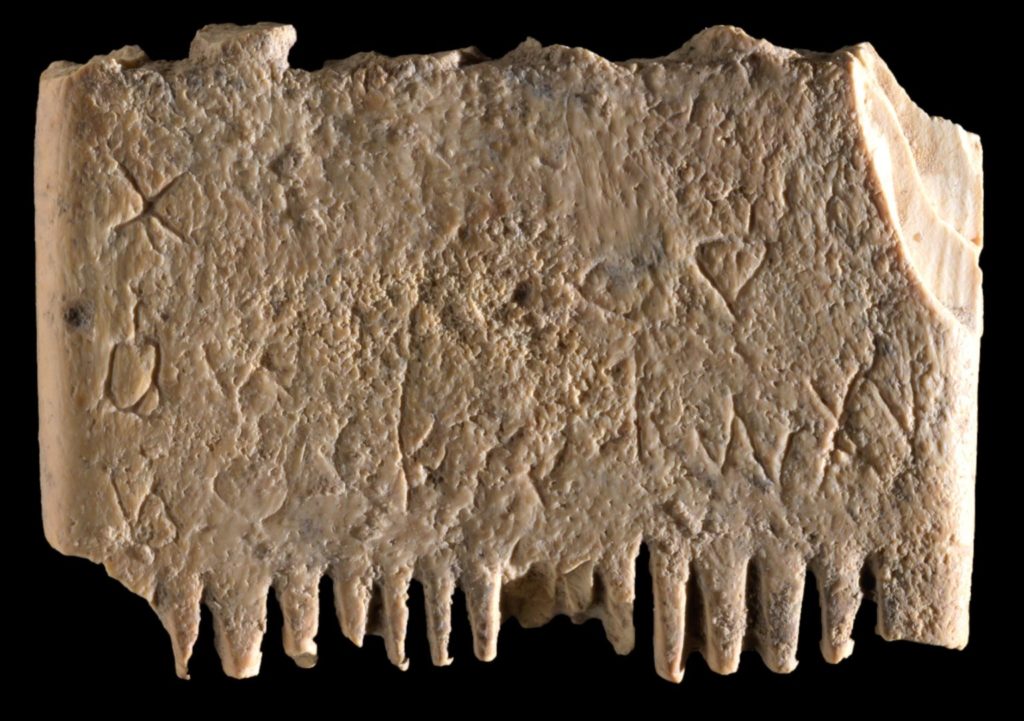
An ancient ivory comb with an inscription has been discovered by Israeli archaeologists dating back 3,700 years ago.
The evidence revealed that the finding may be the earliest example of a sentence in Canaanite alphabetical script.
The inscription urged people during that time to comb their hair and beards so they could avoid catching lice. The sentence includes seventeen letters that say: “May this tusk root out the lice of the hair and the beard.”
Experts say that this discovery will enlighten people’s knowledge on the Canaanite alphabet invented around 1800 B.C. It is said to have been the foundation of all alphabetical systems including Greek, Arabic, Hebrew, Latin, and Cyrillic.
Trouble with lice was considered typical during that time in people’s everyday lives, as archaeologists noted that they have even found microscopic evidence of head lice on the comb.
Tel Lachish, an archaeological site in southern Israel, was where the comb was first excavated in 2016. However, a professor at Israel’s Hebrew University was the one who noticed the tiny words inscribed on it only last year. Details on the finding were published by the Jerusalem Journal of Archaeology on November 9th.
The research behind the ancient comb
Archaeologist Yosef Garfinkel from Hebrew University was the lead researcher of the excavation. According to a report by the Associated Press, Garfinkel mentioned that this was the first full sentence to be discovered even though there have been other artifacts bearing the Canaanite script throughout the years.
Garfinkel stated that the previous findings consisted of only a few letters and, in some cases, words, but it did not leave enough room for research on the Canaanites’ lives. “We didn’t have enough material,” he said.
The find also opens up new debates and discussions regarding the ancient era, the archaeologist added. The fact that the inscription was found on an ivory comb in the ancient city’s palace and temple district reveals that only men were possibly able to read and write. The mentioning of the beard is another piece of evidence which implies this.
“It is a very human text,” Garfinkel said. “It shows us that people didn’t really change, and lice didn’t really change.”
More about Canaanites
It is believed that Canaanites were the ones to have developed the first known alphabetic system of writing. They spoke an ancient Semitic language connected to modern Hebrew, Arabic, and Aramaic and lived in the lands adjoining the eastern Mediterranean.
Finding a complete sentence would indicate even further that Canaanites stood out among early civilizations in their use of the written word. “It shows that even in the most ancient phase there were full sentences,” Garfinkel added.
Experts dated the script to 1700 B.C. by differentiating it to the archaic Canaanite alphabet—which dates back to between 1900 B.C. and 1700 B.C.—previously found in Egypt’s Sinai desert.
However, the discovery showed that the Tel Lachish comb was found in a much later archaeological context, and carbon dating failed to determine its exact age.
An expert’s opinion
Felix Höflmayer, an Austrian archaeologist who is an expert on the period, said that this method of dating was not conclusive. Höflmayer was not part of the publication.
“There are just not enough securely dated early alphabetic inscriptions currently known,” he said. Nevertheless, he added that the discovery was majorly important and will likely help in solidifying Tel Lachish as a center of early alphabet development.
“Seventeen letters preserved on a single object is definitely remarkable,” Höflmayer said.
See all the latest news from Greece and the world at Greekreporter.com. Contact our newsroom to report an update or send your story, photos and videos. Follow GR on Google News and subscribe here to our daily email!



